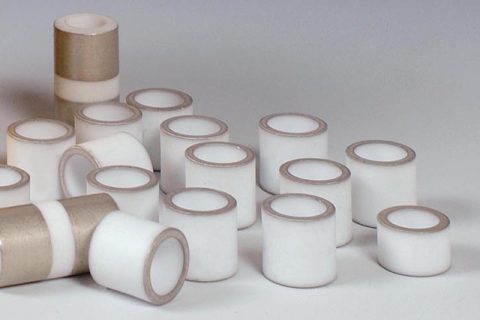Choosing the Right Thermally Conductive Adhesive
November 1, 2023
Achieving an optimal thermally efficient bond requires bespoke consideration per application. So, how do you choose the thermally conductive adhesives?
Thermal adhesives come in a range of formats (films, liquids, tapes, etc.) with varying compositions based on different performance needs. Electrical applications like heat sink bonding, for instance, demand high-performance thermally conductive adhesives which efficiently draw heat away from electrical components. The rate of heat transfer in this context is usually defined as the amount of heat per unit time per unit area that can be conducted through a substrate of unit thickness. Therefore, for a thermally conductive adhesive to aid in cooling electronic components, it must form a perfect physical bond between the two substrates, eliminating microscopic voids to create a flawless contact area. Achieving this often requires bespoke consideration for different applications. So, how do you choose the right thermally conductive adhesive?
What are Your Temperature Requirements?
As in our previous article on choosing the best high-temperature epoxies, the first thing to consider are your temperature requirements. Two key values are your continuous and intermittent peak temperatures, with ceramic- and silicone-based adhesives typically offering the highest performance (<927°C continuous), while the low end of the service temperature range is around -55°C. Naturally, the thermal conductivity of the adhesive is a critical factor too. Its physical composition determines its conductivity, with ceramic, epoxy, and silicon-based adhesives ranging 0.4—9.1 W/m-K. The temperature properties you require will primarily depend on your application.
Will You Need to Rework the Part?
Epoxy-based thermally conductive adhesives create an extremely rigid bond between two substrates so cannot be reworked after curing. This reduces the coefficient of thermal expansion (CTE) mismatch between materials, but also means that the part cannot be altered after curing. Most applications do not require adjustments if surfaces are correctly prepared, if the adhesive is properly dispensed, and the optimal cure is achieved.
Would a Thermal Pad Work Better?
An alternative to thermally conductive adhesives is to use a thermal pad, or a thermally conductive gap pad. These are designed to conform to substrates with accommodations for air gaps and uneven surfaces. They are usually self-adhesive and offer very good thermal properties for excellent heat dissipation. However, thermally conductive adhesive conforms perfectly to the bonding surfaces due to its flowability, which significantly reduces interfacial thermal resistance. Additionally, adhesives offer a much stronger bond, with higher shear strength reinforcing the overall assembly.
Looking for Thermally Conductive Adhesives?
Aremco is a leading supplier of electrically and thermally conductive adhesives which provide solutions to an array of electrical and thermal design problems common in the industry. Our Aremco-Bond™ and Pyro-Duct™ products are our flagship thermally conductive adhesives. Browse our Electrically & Thermally Conductive Adhesives & Coatings Technical Bulletin for more information on maximum operating temperatures, thermal conductivities, and more.


 +1 (845) 268 0039
+1 (845) 268 0039
